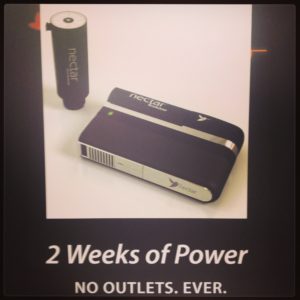What we saw on the Floor at CES this year reflected our overarching theme for 2013: that 2013 is the year of refinement and anticipation – the year for taking stock of the torrent of change that has taken place over the past few years, as we figure out how to power the next big wave of innovation.
A clue to this was that in 2012, CES was mobile-crazy; in 2013, meanwhile, mobile had retreated into the background. This is because by 2013, mobile is so inherent in every new tech innovation that it barely needs to be called out. An example of this was a question that came up on one of my tours: “how will Audi’s self-driving car know to pick you up from the garage?” “Well, like most things in life, via an app on your smartphone, of course!”
So with the mobile era in full swing, the new obsession at CES 2013 was how to better power mobile. Let’s face it: battery life is already everybody’s least favorite thing about mobile, and this frustration is only set to increase as phones handle more tasks and drain batteries faster.
From what we saw at http://vibecasino.net/ CES, the future of power looks to be wireless: Datexx showcased a battery that retains its charge for 6 months; Goal Zero showed us a portable solar-powered charger accompanied by mini solar panel; and Lilliputian Systems flaunted Nectar, which uses disposable fuel cells to power your mobile device for 2 weeks! All of these pointed to the prospect of never having to look another power socket in the eye again. (Does this give you butterflies, too?)
A trio of wireless power bodies were also there: the Wireless Power Consortium (WPC), the Alliance for Wireless Power (AWP) and the Power Matters Alliance (PMA) – each working to establish a wireless platform “standard” for powering devices. (The irony of having three “standards” I am sure is not lost on you either – but like any decent emerging platform, there will be fragmentation before standardization).
But in fact, wireless power only represents a fraction of the innovations happening in the power playing field: elsewhere people are working on more durable batteries, improved antennas and devices that manage power better – and, as Stu Lipoff of the IEEE said, technologies “where you can put a transmitter in the room and it will charge the device” from several feet away.
This will be a space we”ll be watching closely, especially since the next wave of innovation depends on it!

